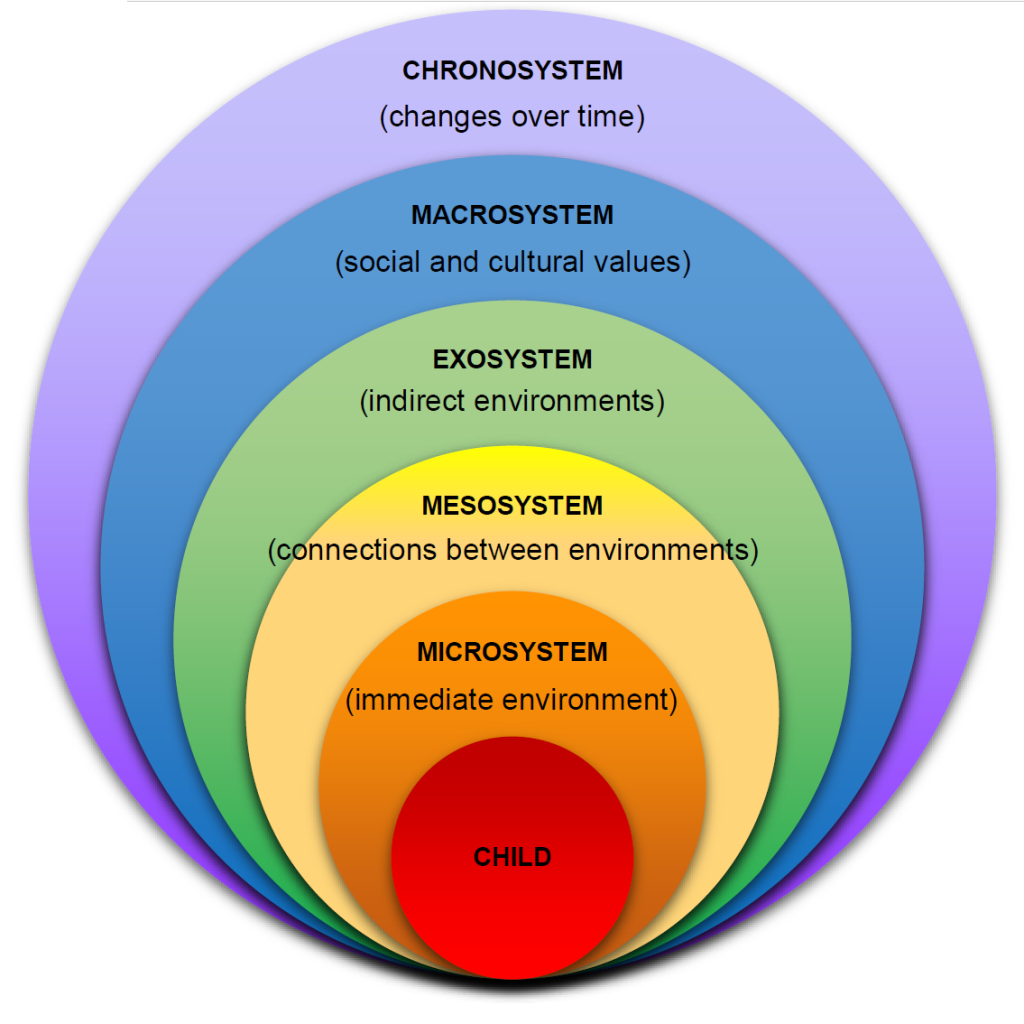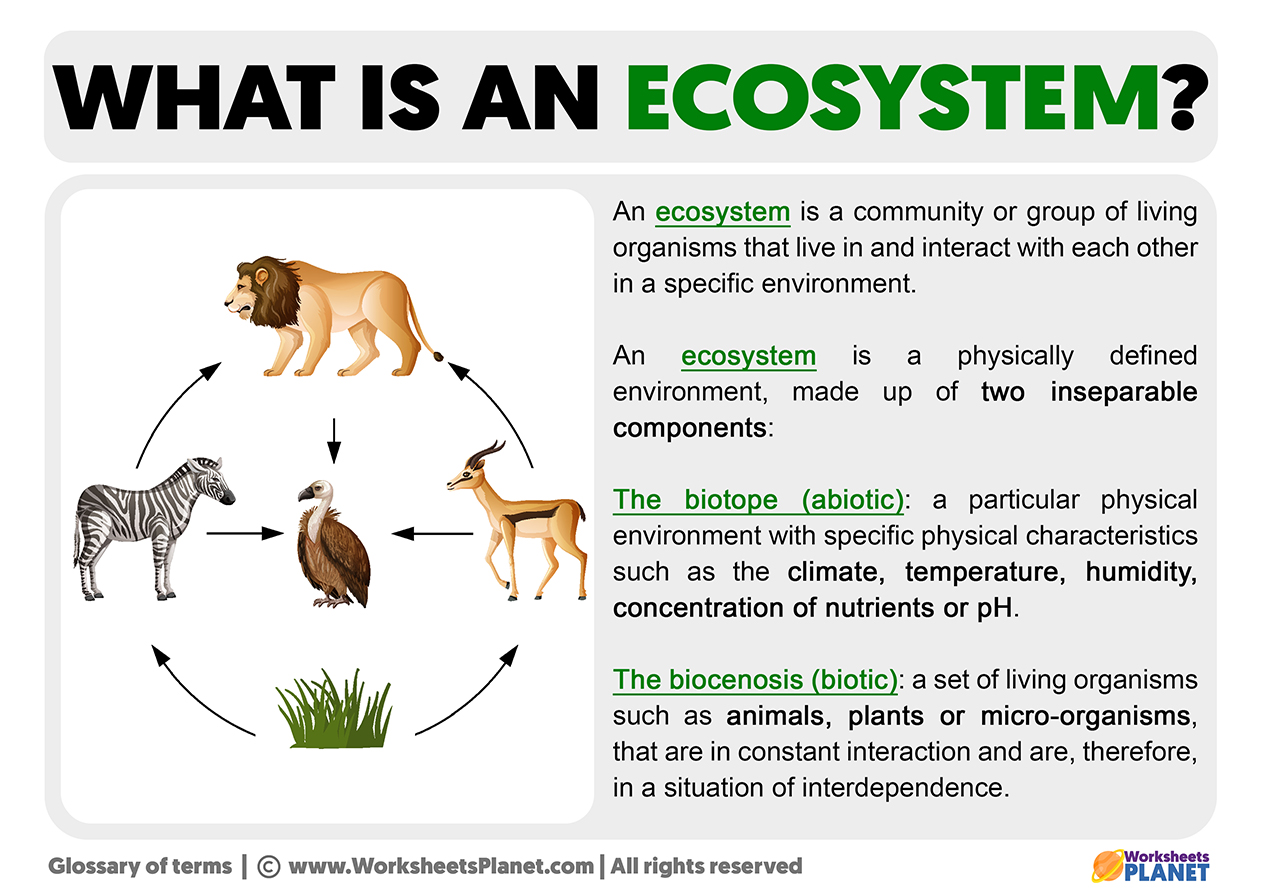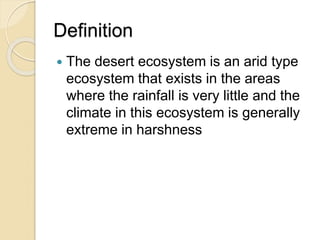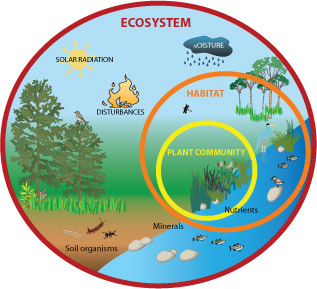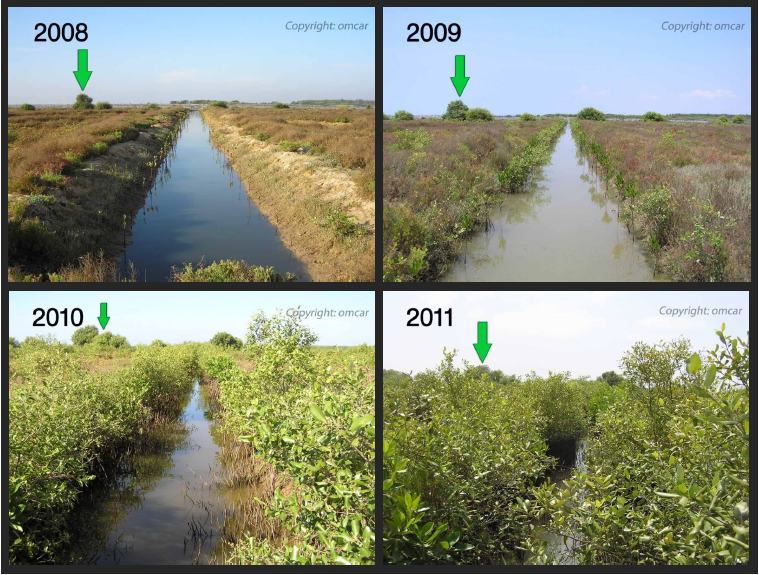Topic define ecosystem stability: Explore the essence of ecosystem stability, where the intricate balance of nature ensures resilience against disturbances, fostering a harmonious environment for all life forms to thrive.
Table of Content
- What is the significance of ecological stability in an ecosystem?
- Understanding Ecosystem Stability
- Factors Influencing Ecosystem Stability
- The Role of Biodiversity in Ecosystem Stability
- Measuring Ecosystem Stability: Resilience and Resistance
- Human Impacts on Ecosystem Stability
- YOUTUBE: Ecosystem Structure and Functions
- Case Studies of Ecosystem Stability and Disturbance
- Conservation Strategies to Enhance Ecosystem Stability
- Future Challenges and Research Directions in Ecosystem Stability
What is the significance of ecological stability in an ecosystem?
Ecological stability is crucial for the long-term health and functioning of an ecosystem. Here are the reasons why it is significant:
- 1. Biodiversity: Ecological stability supports biodiversity by providing a stable environment for a variety of species to coexist and thrive.
- 2. Resilience: Stable ecosystems are better equipped to withstand disturbances such as natural disasters, climate change, or human impacts.
- 3. Productivity: Ecosystem stability promotes productivity as organisms can perform their roles efficiently within a balanced environment.
- 4. Services: Stable ecosystems offer vital services to human societies such as clean air, water, food, and resources.
- 5. Adaptation: An ecologically stable system can adapt to changing conditions and maintain its essential functions over time.
READ MORE:
Understanding Ecosystem Stability
Ecosystem stability refers to the capacity of an ecosystem to maintain its structure and function over time despite external stress and disturbances. It is a critical aspect of environmental health, reflecting how ecosystems can resist change, recover from disturbances, and continue to provide essential services to living organisms, including humans.
- Resilience: The ability of an ecosystem to bounce back after a disturbance or stress. This indicates how quickly an ecosystem can return to its original state.
- Resistance: The ability of an ecosystem to remain unchanged when subjected to a disturbance. It measures an ecosystem"s capacity to withstand external pressures without altering its structure and functions.
Several factors contribute to ecosystem stability, including biodiversity, nutrient cycling, and ecological interconnections among species. High biodiversity often leads to greater resilience and resistance, as a diverse ecosystem can better adapt to changes and mitigate the impacts of disturbances.
- Biodiversity: A wide variety of species ensures functional redundancy, where multiple species can perform similar roles in an ecosystem. This redundancy enhances stability by providing a buffer against the loss of any single species.
- Nutrient Cycling: Efficient nutrient cycling helps maintain ecosystem productivity and supports diverse life forms, contributing to overall stability.
- Ecological Interconnections: Strong inter-species relationships and food webs support ecosystem balance by distributing energy and resources evenly across different trophic levels.
Understanding ecosystem stability is crucial for conservation efforts, as it helps identify the key components and processes that need protection or restoration to maintain healthy, functioning ecosystems. It highlights the importance of preserving biodiversity and ecological integrity to ensure the long-term sustainability of our planet"s ecosystems.

Factors Influencing Ecosystem Stability
The stability of an ecosystem is not a static characteristic but is influenced by a variety of internal and external factors. Understanding these factors is essential for effective ecosystem management and conservation strategies. Here are some of the key elements that affect ecosystem stability:
- Biodiversity: Higher levels of biodiversity contribute to greater resilience and resistance in ecosystems. A diverse range of species ensures functional redundancy, allowing ecosystems to maintain their functions even when disturbances occur.
- Climate: Climate conditions and changes can significantly impact ecosystem stability. Temperature, precipitation patterns, and extreme weather events like droughts and floods can affect the distribution and health of species within an ecosystem.
- Human Activities: Human-induced changes such as habitat destruction, pollution, and the introduction of invasive species can drastically alter ecosystem stability. These activities often reduce biodiversity, degrade habitat quality, and disrupt ecological balances.
- Natural Disturbances: Events such as wildfires, hurricanes, and pest outbreaks can temporarily decrease ecosystem stability but also play a role in maintaining long-term ecological balance by regenerating ecosystems and creating habitats for new species.
- Geological Factors: The physical landscape, soil composition, and availability of water sources influence ecosystem structure and the types of life forms that can thrive in a particular area.
- Interactions Among Species: Predation, competition, mutualism, and other ecological interactions among species influence the distribution, abundance, and health of species within an ecosystem, thereby affecting its overall stability.
These factors interact in complex ways to influence the stability of ecosystems. By understanding and managing these influences, conservation efforts can aim to enhance ecosystem resilience, ensuring ecosystems can withstand and recover from disturbances.
The Role of Biodiversity in Ecosystem Stability
Biodiversity, or the variety of life in the world or in a particular habitat or ecosystem, plays a critical role in maintaining ecosystem stability. The interconnectedness of different species and their roles within ecosystems creates a complex web that supports resilience and resistance to environmental changes. Here’s how biodiversity contributes to ecosystem stability:
- Functional Redundancy: Multiple species can perform similar functions within an ecosystem. This redundancy means that if one species is lost, others can fill its ecological role, helping the ecosystem to maintain its functions and services.
- Resource Efficiency: Biodiversity enables ecosystems to use resources more efficiently. Different species can exploit different resources or the same resources in different ways, reducing competition and increasing overall ecosystem productivity.
- Resilience to Disturbances: Diverse ecosystems are more resilient to disturbances such as disease, fire, and climate change. This is because the impact of a disturbance is spread across a wider range of species, reducing its effect on the entire ecosystem.
- Adaptation to Environmental Changes: Biodiversity enhances an ecosystem’s ability to adapt to environmental changes. Genetic diversity within species increases the chances that some individuals can survive under changing conditions, ensuring the persistence of the species and, by extension, the ecosystem.
Moreover, ecosystems with high biodiversity tend to have stronger inter-species relationships and more complex food webs, which can buffer against changes and maintain ecological balance. The preservation of biodiversity is thus essential for maintaining ecosystem stability, supporting the continuation of ecosystem services vital for all life forms, including humans.

Measuring Ecosystem Stability: Resilience and Resistance
Ecosystem stability is a critical aspect of ecological health, encompassing an ecosystem"s ability to maintain its functions and services despite disturbances. Two key components of stability are resilience and resistance, which provide insights into an ecosystem"s capacity to cope with changes and stressors. Understanding these concepts is essential for effective ecosystem management and conservation.
- Resilience: Resilience refers to the ability of an ecosystem to recover from disturbances and return to its pre-disturbance state. It measures the speed and ease with which ecosystems can bounce back after disruption, reflecting the adaptability of its processes and functions.
- Resistance: Resistance measures an ecosystem"s ability to withstand disturbances without significant changes to its structure, composition, or function. High resistance means an ecosystem can absorb shocks and stresses without undergoing a phase shift or losing its identity.
Several methods are used to measure these attributes, including:
- Monitoring Species Composition: Changes in species diversity and population sizes over time can indicate an ecosystem"s resilience and resistance to disturbances.
- Evaluating Ecosystem Services: Assessing the continuity and quality of services provided by ecosystems, such as carbon sequestration, water filtration, and pollination, helps gauge their stability.
- Ecological Modeling: Computational models simulate ecosystem responses to various disturbances, offering predictions about resilience and resistance under different scenarios.
By measuring resilience and resistance, scientists and conservationists can identify vulnerable ecosystems, understand the impact of environmental changes, and implement strategies to enhance ecosystem stability, ensuring the sustainability of biodiversity and the continued provision of vital ecosystem services.
Human Impacts on Ecosystem Stability
Human activities have profound impacts on ecosystem stability, often disrupting the natural balance and diminishing the capacity of ecosystems to provide essential services. The influence of humans on ecosystems is vast and varied, affecting all aspects of the natural world. Understanding these impacts is crucial for mitigating negative effects and promoting sustainable practices that support ecosystem health and stability.
- Land Use Changes: Conversion of natural habitats into agricultural lands, urban areas, and industrial sites reduces biodiversity, disrupts ecosystems, and diminishes their stability and resilience.
- Pollution: Air, water, and soil pollution from industrial activities, agriculture, and urban runoff introduce toxins that harm wildlife, degrade habitats, and disrupt ecological processes.
- Climate Change: Human-induced climate change alters temperature and precipitation patterns worldwide, affecting species distributions, breeding cycles, and ecosystem functions, thereby impacting ecosystem stability.
- Overexploitation: Overfishing, hunting, and harvesting beyond sustainable levels lead to population declines and loss of biodiversity, weakening ecosystem resilience and functionality.
- Introduction of Invasive Species: The deliberate or accidental introduction of non-native species can outcompete, predation on, or bring diseases to native species, disrupting ecological balances and reducing ecosystem stability.
Addressing these impacts requires concerted efforts to reduce pollution, manage resources sustainably, restore degraded habitats, and adopt practices that reduce our ecological footprint. By understanding and mitigating human impacts, we can protect ecosystem stability, ensuring that natural systems continue to support all forms of life, including our own.

Ecosystem Structure and Functions
Stability: Discover the key to achieving long-lasting stability in your life with this insightful and empowering video. Learn practical tips and strategies to help you navigate challenges effectively and build a solid foundation for success.
Ecological Balance
Balance: Explore the art of finding harmony and balance in all aspects of your life by watching this inspiring video. Delve into the importance of creating equilibrium between work and personal life for a fulfilling and satisfying existence.
Case Studies of Ecosystem Stability and Disturbance
Examining real-world examples of ecosystem stability and disturbance provides valuable insights into how ecosystems respond to various stressors and the effectiveness of conservation efforts. Here are some illustrative case studies that highlight the resilience and challenges faced by different ecosystems:
- The Amazon Rainforest: Often referred to as the "lungs of the Earth," the Amazon plays a crucial role in global climate regulation and biodiversity. Deforestation and climate change threaten its stability, yet it shows resilience through its vast biodiversity and complex ecological processes.
- The Great Barrier Reef: The world"s largest coral reef system has suffered from coral bleaching events due to rising sea temperatures. Conservation efforts focus on enhancing its resilience by reducing other stressors like pollution and overfishing.
- Yellowstone National Park: The reintroduction of wolves in 1995 has demonstrated the importance of keystone species in ecosystem management. This action helped rebalance species populations and improved ecosystem stability by restoring natural processes.
- The Aral Sea: Once one of the world"s largest lakes, the Aral Sea has dramatically shrunk due to water diversion for agriculture. This has led to significant ecological and economic disturbances, showcasing the impacts of human intervention on ecosystem stability.
These case studies underscore the importance of maintaining ecosystem stability through sustainable management practices, conservation efforts, and global cooperation. They also highlight the resilience of nature and the potential for recovery, underscoring the critical role humans play in either disrupting or supporting ecosystem stability.
Conservation Strategies to Enhance Ecosystem Stability
Ensuring the stability of ecosystems is vital for preserving biodiversity, supporting ecosystem services, and maintaining the health of our planet. Implementing effective conservation strategies can mitigate the impacts of human activities and natural disturbances. Here are key approaches to enhancing ecosystem stability:
- Protected Areas: Establishing and managing protected areas to conserve critical habitats and species, allowing ecosystems to function naturally and maintain biodiversity.
- Restoration Projects: Restoring degraded ecosystems through reforestation, wetland restoration, and the reintroduction of native species to rebuild ecological balance and resilience.
- Sustainable Resource Management: Implementing sustainable agriculture, forestry, and fishing practices to reduce environmental impacts, conserve resources, and support long-term ecological health.
- Climate Change Mitigation: Reducing greenhouse gas emissions and implementing adaptation strategies to lessen the impacts of climate change on ecosystems.
- Community Engagement: Involving local communities in conservation efforts to ensure sustainable practices and foster a sense of stewardship for the natural environment.
- Policy and Legislation: Advocating for and implementing laws and policies that protect ecosystems, regulate resource use, and promote sustainable development.
- Research and Monitoring: Conducting ongoing research and monitoring of ecosystems to understand their dynamics, assess threats, and inform conservation actions.
By adopting these strategies, we can enhance ecosystem stability, protect biodiversity, and ensure the continued provision of essential ecosystem services for future generations.

READ MORE:
Future Challenges and Research Directions in Ecosystem Stability
As global environmental changes accelerate, understanding and ensuring ecosystem stability becomes increasingly complex. Future research and action will need to address several critical challenges to preserve ecosystem health and functionality. Here are key areas of focus for future efforts:
- Climate Change Impacts: Assessing and predicting the long-term effects of climate change on ecosystems, including alterations in species distributions, habitat loss, and increased frequency of extreme weather events.
- Biodiversity Loss: Understanding the consequences of declining biodiversity on ecosystem functions and services, and identifying strategies to prevent species extinctions and habitat degradation.
- Invasive Species: Developing effective management strategies for invasive species that threaten native biodiversity and ecosystem stability.
- Human Population Growth: Addressing the impacts of expanding human populations and consumption patterns on natural resources and ecosystems.
- Sustainable Development: Integrating ecosystem preservation into sustainable development plans to ensure that economic growth does not come at the expense of ecological health.
- Technological Advancements: Leveraging technology and data science to improve monitoring, restoration efforts, and our overall understanding of ecosystems.
- Interdisciplinary Collaboration: Fostering collaboration across disciplines to address the multifaceted challenges facing ecosystems, combining insights from ecology, economics, social sciences, and more.
Addressing these challenges requires a global effort, combining scientific research, policy making, and community engagement to develop and implement solutions that enhance ecosystem stability and resilience. The future of our planet depends on our ability to understand and effectively manage the complex interdependencies within natural systems.
Embracing the complexity of ecosystem stability is crucial for our future. By understanding its facets and impacts, we can foster a harmonious relationship with nature, ensuring a resilient and vibrant planet for generations to come.

